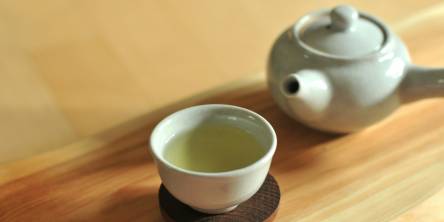6 Effective Ways to Ease Tension Headaches

Tension headaches are one of the most common types of headaches that affect people worldwide. They are characterized by a dull, pulling pain and a feeling of pressure in the forehead, temples, or back of the head. They are often accompanied by general fatigue, irritability, and decreased concentration.
These headaches can be episodic or chronic and are often associated with stress, overexertion, or posture problems. The good news is that tension headache treatment is available. In this article, we have gathered six methods that can help you relieve or completely avoid tension headaches.
1. Proper sleep schedule
Lack of sleep is a direct path to headaches. If you don't get enough sleep, your body is in constant tension, and your muscles don't have time to recover. It's important to maintain a sleep schedule: go to bed and get up at the same time, even on weekends. Try to create conditions in the bedroom that promote rest: darkness, silence, a comfortable temperature, and a cozy bed.
Avoid using devices before bedtime, as the blue light from the screen can interfere with the production of the sleep hormone melatonin. However, if your headaches occur more frequently and don't go away even after rest, you should definitely see a doctor – it could be a symptom of a more serious condition.
2. Improve your posture
Have you ever noticed that sitting at the computer for long periods in an uncomfortable position leads to tension in your shoulders and neck? Poor posture is another common cause of tension headaches. Muscle tension builds up in the neck area, which can cause headaches over time.
Try to be mindful of your posture throughout the day: keep your back straight, your shoulders relaxed, and your head directly over your spine. It is also helpful to use ergonomic furniture and to get up from your workstation regularly to stretch and give your muscles a break.
3. Stress management
One of the main causes of tension headaches is stress. When you are in constant psycho-emotional stress, the muscles in your neck and head tense involuntarily, which causes pain. Therefore, it is important that you learn to manage your stress.
Relaxation techniques such as breathing exercises, meditation, yoga, or even just a walk in the fresh air can significantly reduce anxiety levels. You can also get into the habit of keeping a journal or a gratitude list – this will help structure your thoughts and reduce internal stress.
4. Regular physical activity
Movement is life. Physical activity not only contributes to better general well-being but also helps reduce the frequency and intensity of tension headaches. Even light exercises such as swimming, walking, or stretching can improve blood circulation, relieve muscle tension, and lift your mood by releasing endorphins. The most important thing is to exercise regularly. Try incorporating at least 20 to 30 minutes of moderate activity into your daily schedule.
5. Massage and heat therapy
Neck, shoulder, and head massages are great for relieving muscle tension. You can consult a specialist or learn simple self-massage techniques. Just a few minutes of massage daily can provide significant relief.
A warm compress on the back of the head or neck can also be beneficial. Heat relaxes muscles and improves blood circulation. Some people also enjoy the soothing effects of a warm shower or bath at the end of a busy day.
6. Control your caffeine and alcohol consumption
While coffee can temporarily relieve headaches by constricting blood vessels, too much coffee can have the opposite effect, especially if you regularly exceed the recommended amount. The same goes for alcohol: it causes dehydration, disrupts sleep, and can cause headaches the next day. Try to limit your intake of these substances. Instead, drink more pure water and try herbal teas like chamomile, peppermint, or ginger – they will help you relax and relieve tension.
Similar Articles
Halitosis, sometimes known as foul breath, affects millions of individuals worldwide and can cause humiliation, influencing everyday interactions and confidence.
In the modern world, maintaining good health often feels like a constant challenge. Between busy lifestyles, sedentary habits, and lack of motivation, many people find it difficult to stay consistent with exercise, diet, or wellness practices.
Learn how UV toothbrush sanitizers use UV-C light to kill 99.9% of bacteria, viruses, and fungi—backed by science for better oral health.
In the past, the experience of soaking in a hot tub or relaxing in a sauna was something reserved for spas, health clubs, or luxury retreats
Learn practical strategies for nurses to advance careers while maintaining patient care, managing time, and supporting well-being in today’s fast-paced healthcare.
Learn 6 key benefits of a juice cleanse, from boosting energy and hydration to clearer skin, easier digestion, and healthier eating habits.
Discover 5 simple ways to enjoy green tea daily for better taste, more nutrients, and lasting wellness benefits for your body and mind.
Discover how house slippers support foot health indoors—combining warmth, protection, and support—with insights from podiatrists and real‑world studies.
How whole-body donation creates a lasting impact, advancing medical education, research, and future healthcare breakthroughs.









